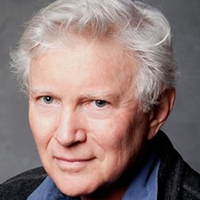The Evolutionary Importance of Self-Directed Play
A Discussion with Peter Gray
 May 19, 2016 | Peter Gray is a psychologist and author of Free to Learn: Why Unleashing the Instinct to Play Will Make Our Children Happier, More Self-Reliant, and Better Students for Life (Basic Books, 2013).
May 19, 2016 | Peter Gray is a psychologist and author of Free to Learn: Why Unleashing the Instinct to Play Will Make Our Children Happier, More Self-Reliant, and Better Students for Life (Basic Books, 2013).
Gray is one of many experts to provide insight and data about play for the Genius of Play initiative, which aims to bring more play into kids’ lives. In a recent interview, Gray spoke about his theories on play as a primal mode of education and offered ways parents can inspire more play in children’s daily routines. Below are some excerpts from that interview; the full version is available on The Genius of Play website:
What is your definition of play?
One of the crucial, defining characteristics of play is that it’s directed by the children or players themselves – it’s self-directed. Engaging in adult-directed games like sports, or activities in school where a teacher is telling children what to do, is not play by my definition.
My theory is that play came about through natural selection to serve the purpose of education. Play is the method by which children practice being adults and can be in charge of their lives.
How prevalent is play, by your definition, in modern U.S. culture?
Children are deprived of the regular freedom of play – they are constantly in school or school-like activities. Since the 1950s there has been a continuous decline in children’s freedom to play, especially to play outdoors. In that same time we’ve seen correlating increases in mental disorders in childhood, like depression, anxiety and other stress-related issues. If children are deprived of play, they are deprived of the opportunities to learn the skills that prevent these issues.
What can U.S. parents and communities do to foster more self-directed play?
Draw inspiration from other countries.
- Adventure playgrounds exist in the U.K. and Europe where fully trained play workers are present but won’t intervene unless necessary – like a lifeguard on a beach – and parents are encouraged to leave. It’s slowly catching on in the United States, too, but parents have a harder time leaving.
Schools can become play areas.
- The after-school period from 3 - 6 p.m. could be a free play period, using schools for their gymnasiums, outdoor playgrounds, art supplies and other resources, and there can be age-mixed play. This would not be curriculum-based activity; it would just use the school as a venue and be a relatively inexpensive means to make use of facilities that are already there.
Communities can organize play areas.
- In Playborhood, author Mike Lanza detailed how a group of inner city mothers got together to enable outdoor play in their neighborhood. They approached the city to close a street in proximity to the local school to let the kids feel free to go out and play. It does take effort and initiative on the community level, but this proves it can be accomplished.
When parents understand the true benefits of free play, I think they would welcome these ideas and find ways to bring more play into their children’s lives.
For more expert advice, play tips and sweepstakes, visit www.thegeniusofplay.org.